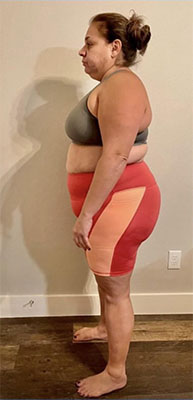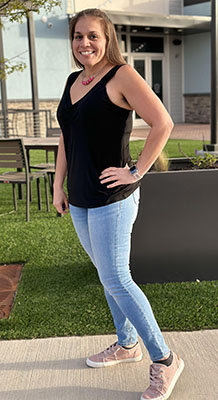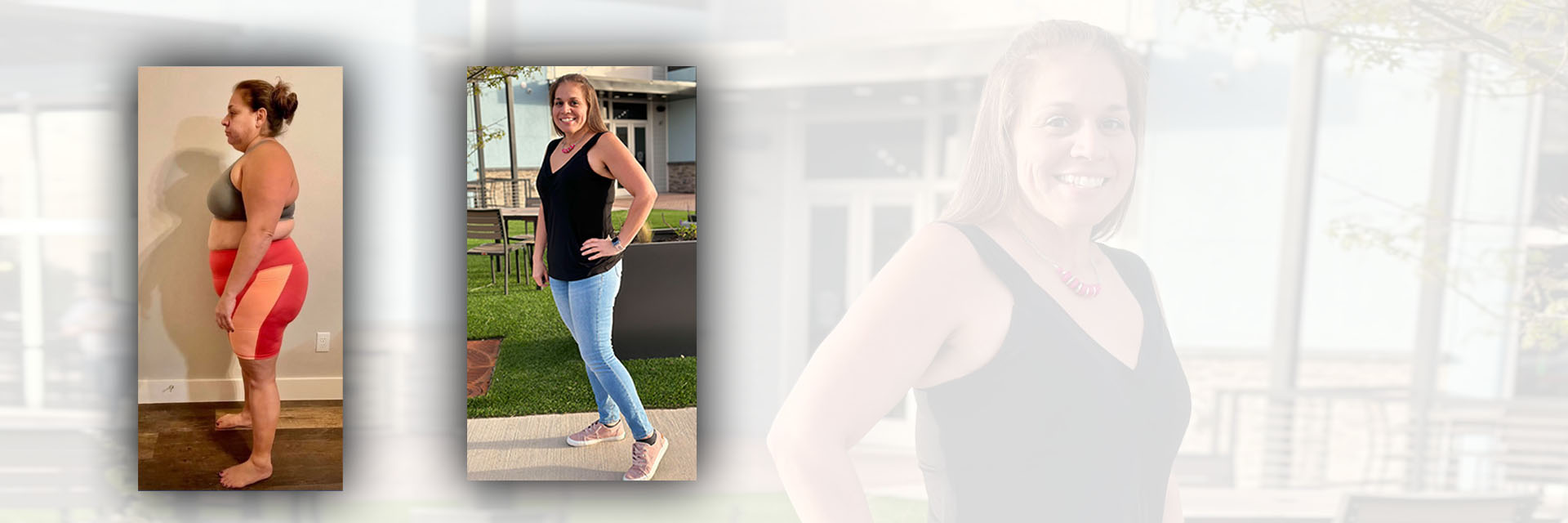Despite a person’s best efforts, the journey to meaningful weight loss can prove to be too difficult when undertaken on one’s own. It can get frustrating to count calories and carbs, eat enough of the right protein, exercise regularly and do all the things known to support weight loss only to have a scale that won’t budge. Kim Poole knows the struggle all too well.
 The Aubrey mom had been on a cycle of weight loss much of her life. She had tried a serious exercise routine and even got herself a personal trainer. She used over-the-counter and prescription weight-loss medications and went on all the fad diets. Yet, she gained weight at every turn.
The Aubrey mom had been on a cycle of weight loss much of her life. She had tried a serious exercise routine and even got herself a personal trainer. She used over-the-counter and prescription weight-loss medications and went on all the fad diets. Yet, she gained weight at every turn.
“Nothing worked,” Kim admits. “I finally got to my highest weight of 275 lbs. and decided I had to do something because I could feel myself slipping away. I wasn’t who I wanted to be for me and my kids anymore.”
Kim knew it was time to consider bariatric surgery. She met with A. Joseph Cribbins III, M.D., FASMBS, a physician on the medical staff at Texas Health Presbyterian Hospital Plano and at Texas Center for Bariatrics & Advanced Surgery. “After reading the reviews and having my consult, I knew he was the right choice. His personality, understanding of my situation and non-judgmental attitude were amazing. He truly cares for his patients,” she says.
“Weight comes with troubles, aches and pain as well as more significant issues like diabetes and high cholesterol,” Cribbins explains. “What bariatric surgery can do is take off excess weight and may help make people feel better. There are quality of life advantages with having a procedure, and that’s where Kim was in the decision process.”
The Right Path
 During the consultation, Cribbins looked at Kim’s medical history, took her through her expectations, and explained the surgery and outcomes. Based on the goals she wanted to achieve, the decision was made to perform a minimally invasive sleeve gastrectomy on the 40-year-old. In a sleeve gastrectomy, part of the stomach is separated and removed from the body. The remaining, smaller section of the stomach cannot hold as much food. It also produces less of an appetite-regulating hormone to lessen the desire to eat.
During the consultation, Cribbins looked at Kim’s medical history, took her through her expectations, and explained the surgery and outcomes. Based on the goals she wanted to achieve, the decision was made to perform a minimally invasive sleeve gastrectomy on the 40-year-old. In a sleeve gastrectomy, part of the stomach is separated and removed from the body. The remaining, smaller section of the stomach cannot hold as much food. It also produces less of an appetite-regulating hormone to lessen the desire to eat.
“The sleeve is generally a safe, uncomplicated procedure that works well for most people and is one that’s very easy to live with,” Cribbins says.
Before surgery could ever take place, Kim had to prepare both her body and her mind. She met with a bariatric dietitian, who got her set up on a special diet of protein shakes and other healthy nutrients for several weeks. But the most challenging part, according to Kim, was the mental process.
“The main thing I had to do was mentally prepare for what life would be like after the surgery, but knowing the end goal was my motivation to push through. Dr. Cribbins’ office sends emails of encouragement and provides inspiring posts on Facebook and Instagram. These really helped me.”
The procedure lasted about 40 minutes, followed by a night’s stay in the hospital. Now, on the other side of surgery, Kim is living life to the fullest. She was down 112 lbs. in just 10 months.
“I wear a size small and actually enjoy what I see in the mirror. I went from a size 22 to a size 4. I eat pretty much what I want, just in smaller portions and everything in moderation. I eat better now because I actually crave the healthy stuff. Salmon and Brussel sprouts, two things I never ate before, are seriously my favorite things to eat now!
I no longer binge eat. Not just because I physically can’t but because I don’t crave food like I used to. I eat when I’m hungry and stop at the first sign of being full. This experience has helped me teach my daughters how to have a better relationship with food. I can be an example they look up to,” she happily says.
“Quality of life surprises happen post-procedure that people aren’t even thinking about. You eat a small amount of food and feel full. Surgery typically changes the relationship a person has with food and helps them make healthier choices for a better future,” Cribbins adds.

